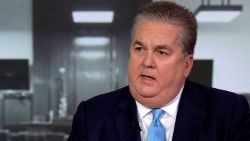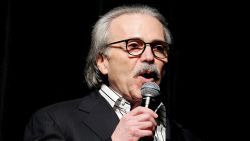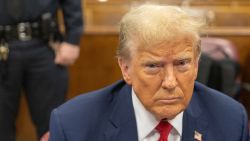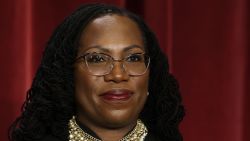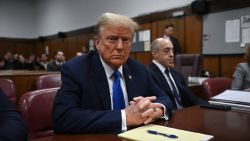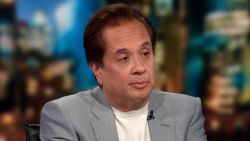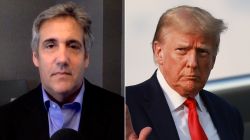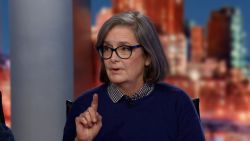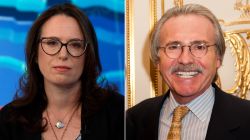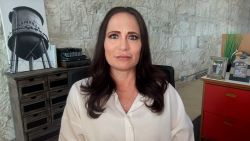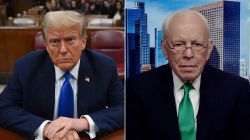President Donald Trump’s acknowledgment that he discussed former Vice President Joe Biden in a July call with Ukraine’s president has intensified scrutiny on his interactions and decisions on Ukraine.
The growing controversy stems from a whistleblower complaint that deals, at least in part, with a phone call Trump had with Ukrainian President Volodymyr Zelensky on July 25. A transcript of the conversation released by the White House shows Trump repeatedly pushed Zelensky to investigate former Vice President Joe Biden and his son, Hunter.
There is no evidence of wrongdoing by either Joe or Hunter Biden.
Even before the whistleblower complaint was made available to lawmakers, House Speaker Nancy Pelosi on Tuesday declared Trump had betrayed his oath of office and announced she was opening a formal impeachment inquiry into the President.
Below is a timeline of recent key events and stories surrounding Trump, Ukraine and the intelligence whistleblower.
Key events
- December 2018: A Ukrainian court upholds a complaint by Member of Parliament Boryslav Rozenblat, who alleged that Head of the National Anticorruption Bureau of Ukraine Artem Sytnyk and Member of Parliament Serhiy Leshchenko had interfered in the 2016 US presidential election, according to the whistleblower complaint.
- March 20: In an interview with The Hill cited in the whistleblower complaint Ukraine Prosecutor General Yuriy Lutsenko alleges that Biden in 2016 pressured former Ukrainian President Petro Poroshenko to fire Ukrainian Prosecutor General Viktor Shokin in a bid to stop a criminal probe that involved Hunter Biden.
- April 21: Trump and Zelensky share “a brief congratulatory call” after Zelensky is elected president of Ukraine, the whistleblower complaint says.
- April 29 (on or about): Whistleblower learns that US ambassador Marie Yovanovitch had been recalled to Washington and that associates of Giuliani were trying to contact the incoming Zelensky team.
- May: Giuliani flirts with going to Ukraine – then says he isn’t going to go after criticism.
- May 6: The State Department announces that Yovanovitch will permanently leave her post on May 20.
- June 12: Trump tells ABC’s George Stephanopoulos he would not alert the FBI if foreign governments offered him damaging information about his opponents in the 2020 presidential election.
- June 21: Giuliani tweets that Zelensky was “still silent on investigation of Ukrainian interference” in the 2016 US presidential election.
- July 10-11: Oleksandr Danylyuk, Secretary of Ukraine’s National Security and Defense Council, visits the White House, Pentagon and the State Department.
- July 16: Leshchenko publicly states that a Ukrainian court had overturned the lower court’s decision to uphold Rozenblat’s complaint, according to the whistleblower complaint.
- July 24: Special counsel Robert Mueller testifies to Congress.
- July 25: Trump and Ukrainian President Volodymyr Zelensky talk by phone. In September it is reported that Trump pressed Zelensky to investigate Democratic presidential candidate Joe Biden’s son on the call and Trump later acknowledged Joe Biden was discussed. “We had a great conversation. The conversation I had was largely congratulatory, was largely corruption – all of the corruption taking place, was largely the fact that we don’t want our people like Vice President Biden and his son (adding to the corruption),” Trump told reporters on Sunday. In a readout of the call, the Ukraine government referenced discussion of investigating corruption, but the White House version makes no mention – saying only that Trump was congratulating Zelensky on his recent election.
- July 25: A readout of the call between Trump and Zelensky is posted on the official website of the President of Ukraine.
- July 26: US Special Representative for Ukraine Negotiations Kurt Volker, accompanied by US Ambassador to the European Union Gordon Sondland, met with Zelensky and other “Ukrainian political figures” in Kyiv, according to the whistleblower complaint. Volker and Sondland reportedly advised the Ukrainian leadership on how to “navigate” Trump’s demands of Zelensky.
- July 28: Trump announces that Director of National Intelligence Dan Coats will retire.
- August: Giuliani says he spoke to a representative for Zelensky by phone and in person.
- August 8: Trump announces deputy Director of National Intelligence Sue Gordon will depart the administration.
- August 9: Trump tells reporters that Zelensky had been invited to the White House.
- August 12: A whistleblower files a complaint with the intelligence inspector general.
- August 15: Gordon and Coats depart the Office of Director of National Intelligence.
- August 26: Intelligence IG forwards complaint to the acting DNI.
- August 28: Then-national security adviser John Bolton meets with Zelensky in Kiev.
- August 30: Trump considers blocking $250 million in military aid to Ukraine, effectively pausing disbursement of the funds during a formal review process.
- September 1: Vice President Mike Pence meets with Zelensky in Warsaw.
- September 2: Deadline for DNI to send whistleblower complaint to Congress – he does not send it.
- September 9: Intel IG notifies House Intelligence Chairman Adam Schiff of an “urgent concern” that DNI has overruled.
- September 9: Three House committees launch investigation of efforts by Trump, Giuliani and others to pressure the Ukrainian government to assist the President’s reelection efforts. The committees request information about Trump’s July phone call with Zelensky.
- September 10: Schiff demands acting DNI turn over the complaint.
- September 11: The administration hold on Ukraine aid is lifted.
- September 13: Schiff subpoenas the acting DNI.
- September 17: The acting DNI refuses to testify.
- September 17: Secretary of State Mike Pompeo talks to the Ukrainian foreign minister
- September 18: Revelation is reported that the complaint involves a Trump communication with a foreign leader and a “promise” made.
- September 18: The Intelligence inspector general and the acting DNI say they will brief the House Intelligence Committee.
- September 18: Pence talks to Ukrainian President Zelensky by phone.
- September 19: The Intelligence inspector general gives a classified briefing to the House Intelligence Committee.
- September 19: It is revealed by The Washington Post and The New York Times that the whistleblower’s concern was partly in regard to Ukraine.
- September 20: It’s reported that Trump pressed Zelensky to investigate Biden’s son during a call on July 25.
- September 22: Trump acknowledges that he discussed Joe Biden in a July call with Zelensky.
- September 22: House Speaker Nancy Pelosi writes to the acting DNI stating that if the administration refusals continue, it would constitute a “serious possible breach of constitutional duties by” Trump and would take Congress “into a whole new stage of investigation.”
- September 23: Trump tells reporters at the UN that his conversations with Ukraine’s leaders were without fault and said he wanted the world to see what he said.
- September 23: The Washington Post reports that Trump asked his acting chief of staff Mick Mulvaney to put a hold on millions in military aid to Ukraine roughly one week before a call with the Zelensky.
- September 24: Trump tweets the White House will release a transcript of his call with Zelensky.
- September 24: House Speaker Nancy Pelosi announces formal impeachment inquiry into Trump.
- September 24: Schiff tweets the whistleblower is interested in testifying and could do so before the end of the week.
- September 25: The White House releases their transcript of Trump’s call with Zelensky.
- September 25: Trump meets with Ukraine President Zelensky at the United Nations General Assembly.
- September 25: Whistleblower’s complaint is delivered to Capitol Hill.
- September 25: Whistleblower tentatively agrees to meet with congressional lawmakers.
- September 25: List of House Democrats in support of opening an impeachment inquiry tops 200.
- September 26: The acting DNI briefs the House Intelligence Committee.
CORRECTION: This story has been updated to correctly reflect the date that the hold on Ukraine aid was lifted.
CNN’s Kylie Atwood, Zachary Cohen, David Shortell and Devan Cole contributed to this report.



